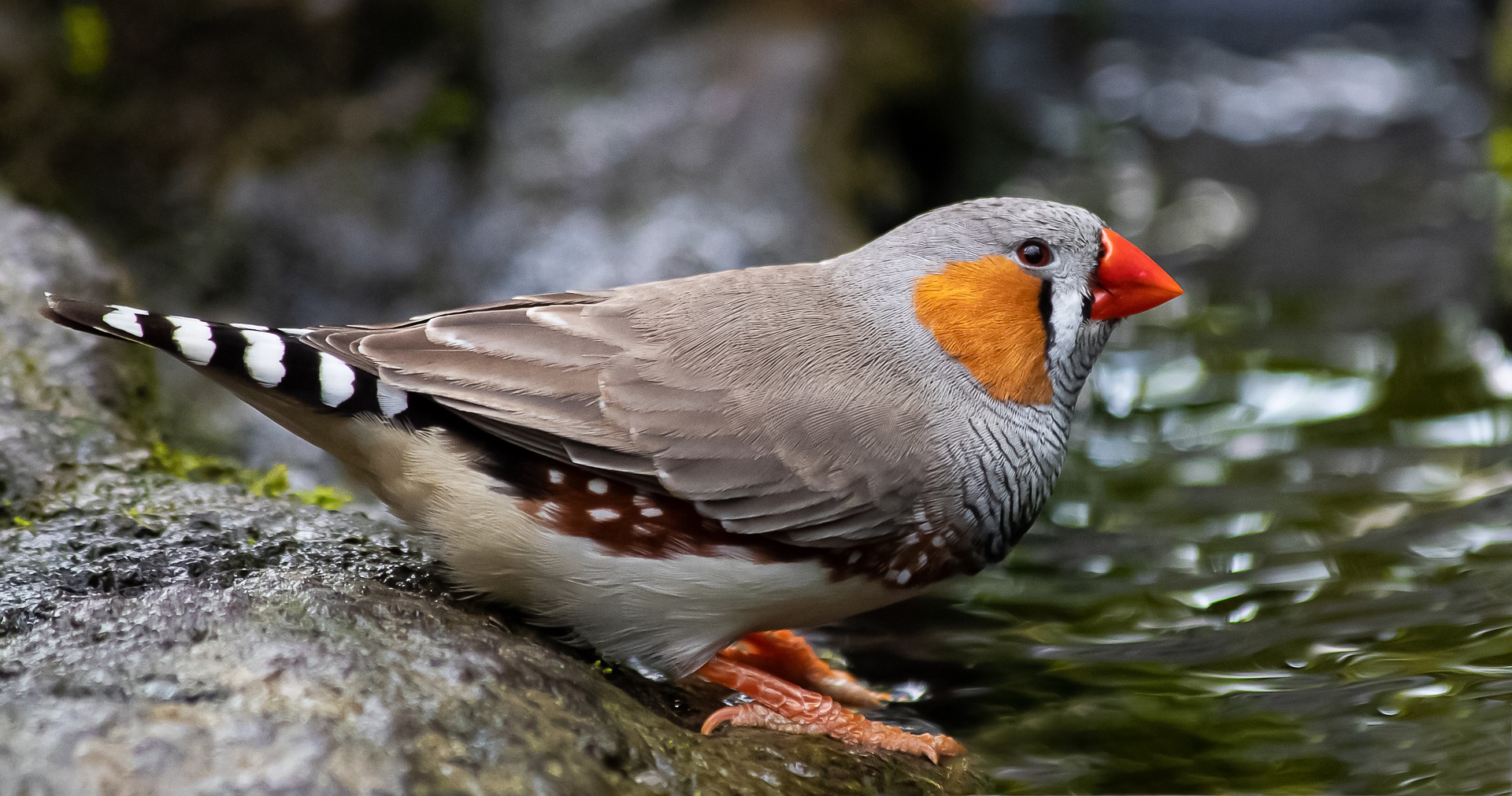 Evolution & Behaviour
Evolution & Behaviour
How Does Memory Guide Learning? Birds Can Answer
Inherent complexities of the human brain make it difficult to pinpoint the process of memory encoding. Turning to songbirds, we identify memory circuits by implanting novel memories that guide how they learn the pattern of their song.

Memory is how our past experiences shape our behavior in the future. For example, as children, we form memories of our parents and other people speaking and use those memories to learn spoken language ourselves. Forming memories cause changes to many different regions of our brains to enable us to learn to speak. However, this process is very complex, and it is difficult to pinpoint where and how exactly those memories are stored. In contrast to the human brain, some animals have dedicated brain areas for performing learned behaviors, like songbirds who learn how to sing. Studying songbirds can reveal fundamental principles of how particular types of memories change the brain.
Young male zebra finches memorize their father's song, which consists of several syllables like "daa-dii-doo-daa-dii"[i], and then spend many weeks practicing until they can sing it perfectly. It is not clear how the brain forms a memory of the father's song. We recently undertook a study to identify which brain circuits encode the memory of the fathers" song.
In the zebra finch brain, an auditory system processes sound when the bird hears a song, and a motor system generates commands for the body to produce the song. At the interface of these two systems is a pathway that transmits information about song from the auditory system to the motor system. This pathway starts in small auditory brain area named nucleus interface (NIf) and ends in a motor region named HVC (proper name, not an abbreviation). We tested if the NIf-HVC pathway transforms information about the duration of song syllables of the father's song into a memory that guides vocal imitation of song syllable durations. If so, controlling activity in this pathway would also control the memories that young birds use to guide song syllable imitation.
Animal brains consist of a vast sea of neurons. How can we go into a complex brain circuit and control the activity in only one pathway? A new technology called optogenetics uses light to manipulate specific neurons by using a non-harmful virus to make the activity of certain neurons sensitive to light. In our experiment, we made connections between NIf and HVC sensitive to light, and then shined light at different durations to make this pathway active for different periods of time.
We delivered either "long" or "short" activity patterns with light when the birds were young - the same age they would have been tutored by their own fathers - and we tracked how their songs developed afterwards. We found that the timing patterns of the shone light shaped their song development and even their adult song. It seemed as these manipulations implanted memories for the length of song syllables. Birds for which we played long light pulses developed songs that had abnormally long song syllables, like "daaaaaaaa". Birds that received short lights pulses learned song syllables with abnormally short durations, like "d-d-d-d". This indicates that neural activity in the NIf-HVC pathway encodes timing of the tutor song, and that manipulations of timing in this circuit can implant novel memories that are then used to guide learning of the duration of song syllables. In a follow-up experiment, in which we removed this brain pathway using lesions, we found that the pathway is no longer needed to learn or produce song after young birds encode memories. This shows that the timing information of the tutor song memory must be stored somewhere in the region beyond the NIf-HVC pathway.
In summary, we discovered how the zebra finch brain encodes the timing information of the song memory by implanting memories that taught birds to sing songs with particular timing. We, as humans, learn many behaviors from observation and imitation, and timing is often a critical aspect of these behaviors. For instance, playing music relies on learning the correct tempo and rhythm. Whether musicians and birds learn their songs similarly, is an interesting, but still an open question.
Original Article:
Zhao W, Garcia-Oscos F, Dinh D, Roberts T. Inception of memories that guide vocal learning in the songbird. Science. 2019;366(6461):83-89.Edited by:
Dr. Anatoly Kozlov , Senior Scientific Editor
We thought you might like
The lifetime of memories
Jun 22, 2016 in Neurobiology | 3.5 min read by Thomas Stefanelli , Pablo MendezAttempts to Forget the Past Make It Harder to Remember the Present
Apr 8, 2016 in Psychology | 4 min read by Justin C. Hulbert‘Online’ integration of sensory and fear memories
Jan 17, 2020 in Psychology | 3.5 min read by Francesca S. Wong , R. Fred Westbrook , Nathan M. HolmesMore from Evolution & Behaviour
Cicada emergence alters forest food webs
Jan 31, 2025 in Evolution & Behaviour | 3.5 min read by Martha Weiss , John LillSize does not matter: direct estimations of mutation rates in baleen whales
Jan 29, 2025 in Evolution & Behaviour | 4 min read by Marcos Suárez-MenéndezThe Claws and the Spear: New Evidence of Neanderthal-Cave Lion Interactions
Jan 22, 2025 in Evolution & Behaviour | 3.5 min read by Gabriele RussoA deep-sea spa: the key to the pearl octopus’ success
Jan 20, 2025 in Evolution & Behaviour | 3.5 min read by Jim BarryFeisty fish and birds with attitude: Why does evolution not lead to identical individuals?
Aug 31, 2024 in Evolution & Behaviour | 3 min read by Lukas Eigentler , Klaus Reinhold , David KikuchiEditor's picks
Trending now
Popular topics


